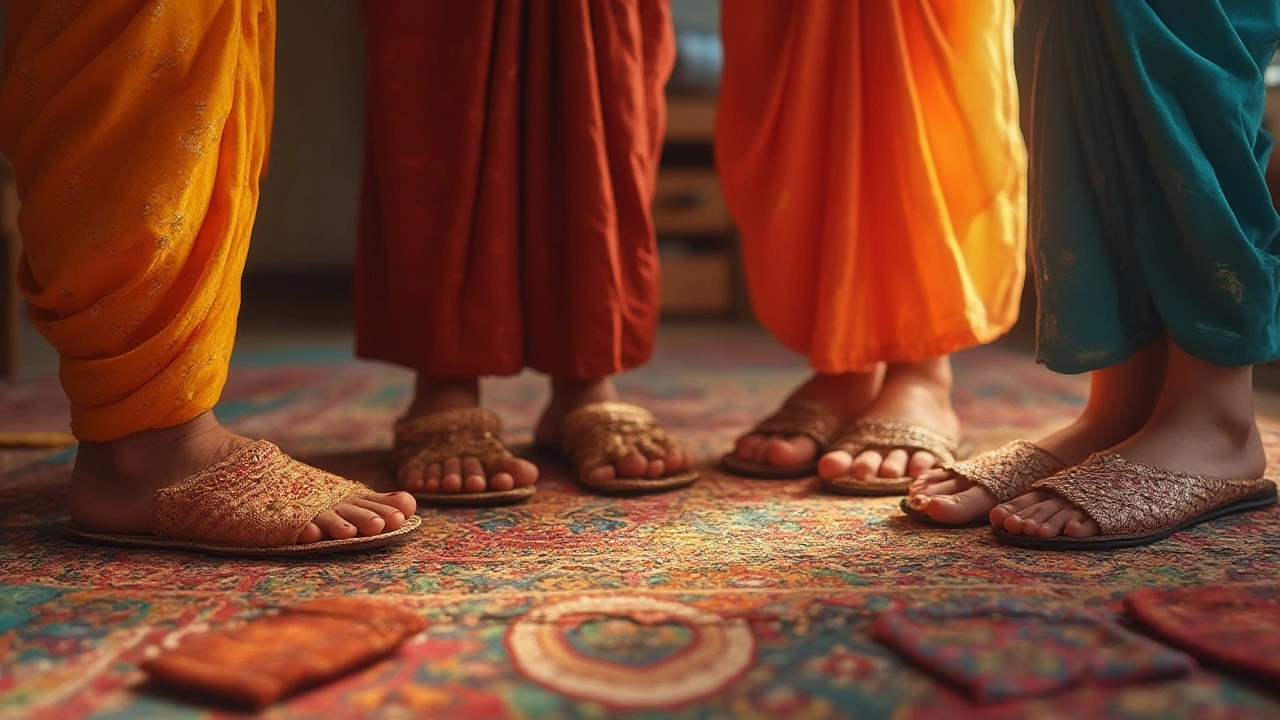
Best Slippers for Comfort: A Guide to Choosing Your Ideal Pair
Not all slippers are equal! Dive into what really sets the best slippers apart, from materials to fit, durability, comfort, and maintenance tips.
moreWhen you think about slipper materials, the fabrics and substances used to make indoor footwear that’s soft, supportive, and built for daily wear. Also known as slipper fabrics, these materials determine whether your slippers feel like a hug for your feet—or a source of blisters and sweat. It’s not just about looks. The material affects warmth, breathability, how long they last, and even how well they fit over time.
Most slippers use one of four main types: fleece, a plush, synthetic or wool-blend fabric that traps heat and feels cozy against bare skin, leather, a natural material that molds to your foot, offers structure, and lasts years if cared for, rubber, a durable, water-resistant base often used in the sole to prevent slipping and protect from damp floors, and memory foam, a cushioning layer that responds to body heat and pressure to support arches and heels. Each has trade-offs. Fleece is warm but can trap moisture. Leather breathes better but needs conditioning. Rubber grips well but can feel stiff. Memory foam feels amazing at first but can flatten out after months of daily use.
What you choose depends on your feet and your home. If you have flat feet or plantar pain, slippers with leather uppers and memory foam insoles help. If you live in a cold climate, fleece-lined slippers with rubber soles keep you warm and safe. If your floors are tile or hardwood, a thick rubber sole prevents slips. And if you’re buying slippers a size bigger—like some guides suggest—you’re likely choosing the wrong material. Too-big slippers made from stretchy fleece will sag and bunch. Tight leather ones will pinch. The right material should adapt to your foot, not the other way around.
Some brands cut corners by using cheap synthetic blends that feel fine for a week, then start to smell, flatten, or fall apart. That’s why you’ll see posts here about how to measure your feet properly, why sizing up isn’t always the answer, and how to tell if your slippers are built to last—or just to look pretty on a shelf. You’ll also find real-world advice on what materials work best for swollen feet, sensitive skin, or hot climates—because not every foot is the same, and neither should your slippers be.
Below, you’ll find practical guides that cut through the noise. No fluff. Just what materials actually deliver comfort, how to spot quality construction, and how to avoid the common mistakes people make when they pick slippers based on price or color alone. Whether you’re replacing worn-out pairs or buying your first real pair, the right material makes all the difference.

Not all slippers are equal! Dive into what really sets the best slippers apart, from materials to fit, durability, comfort, and maintenance tips.
more